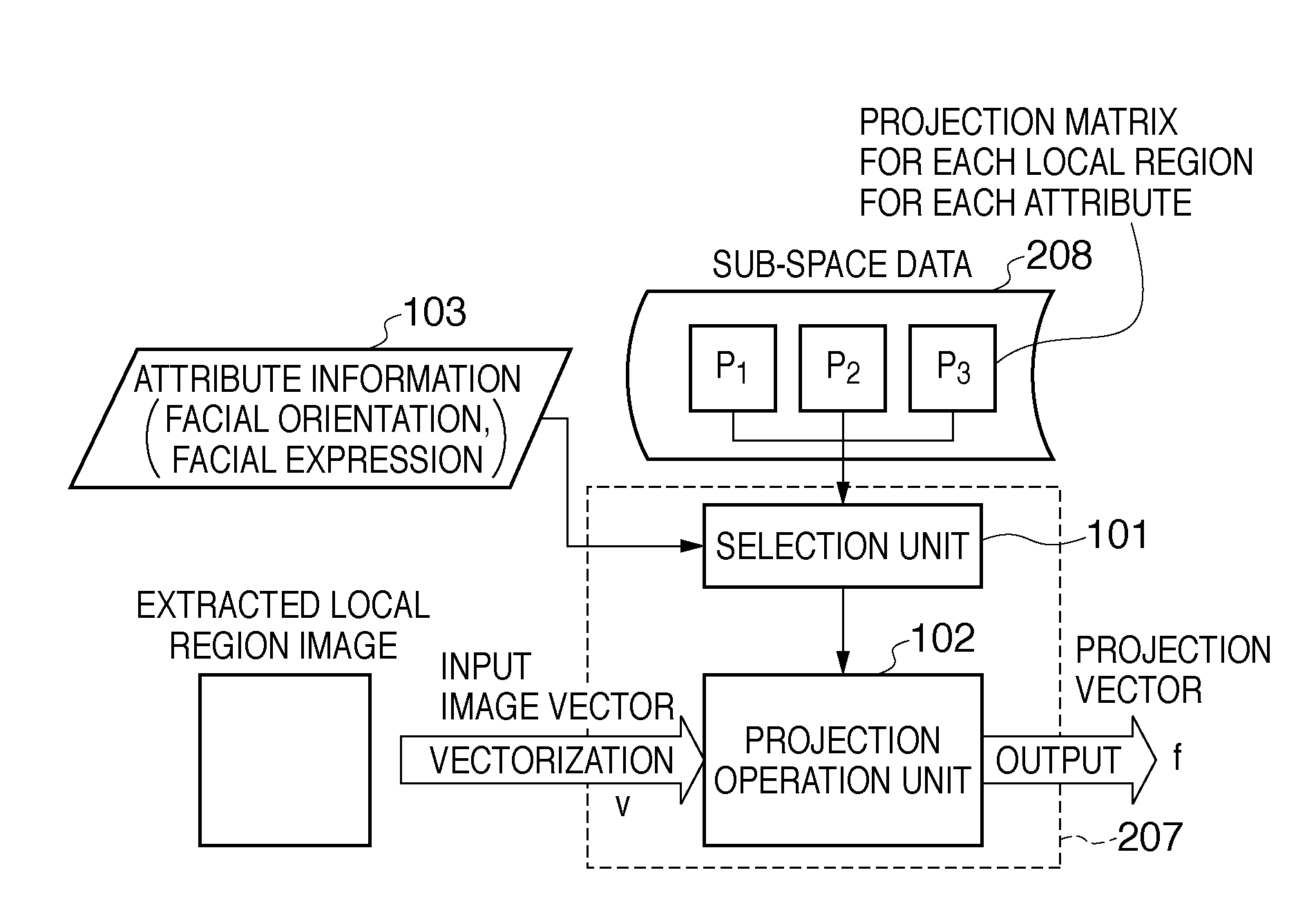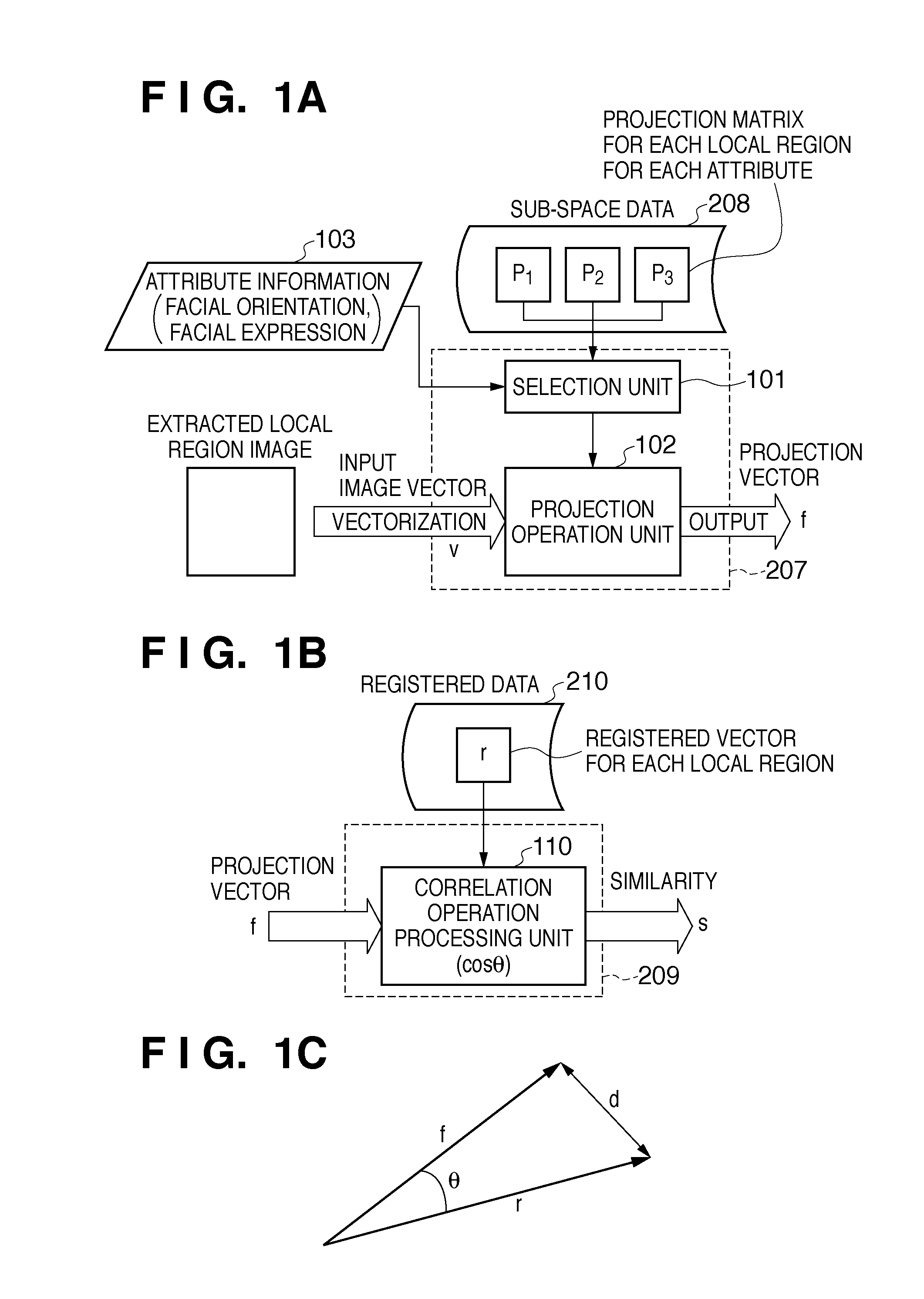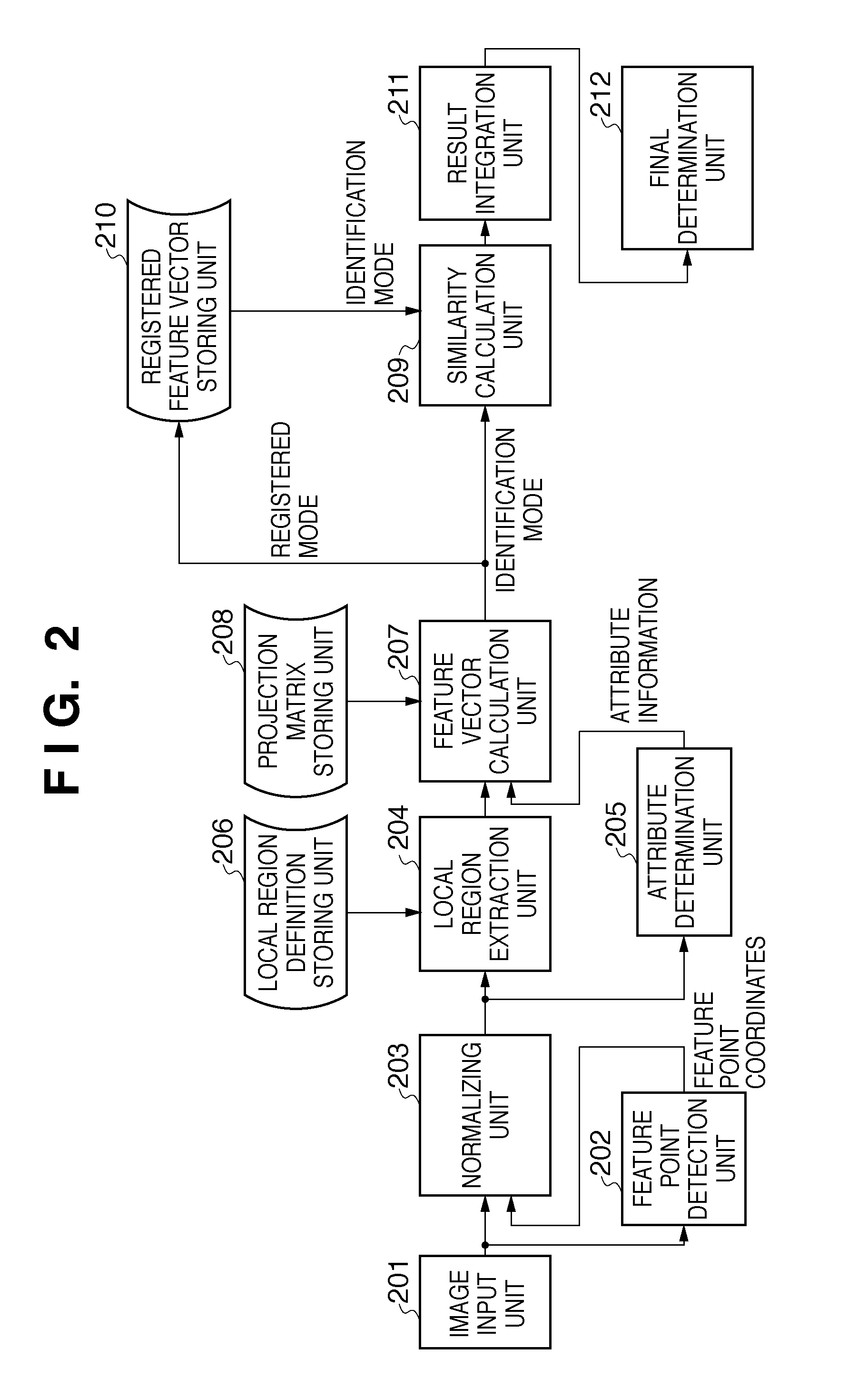Image processing apparatus and method, and computer-readable storage medium
a technology of image processing and processing apparatus, applied in the field of image processing apparatus and image transformation processing method, can solve the problems of difficult to extract and classify only inter-individual differences while ignoring photographic, and the influence does not always appear uniformly in the entire face region, so as to achieve the effect of not increasing parameters and processing loads
- Summary
- Abstract
- Description
- Claims
- Application Information
AI Technical Summary
Benefits of technology
Problems solved by technology
Method used
Image
Examples
embodiment 1
Description of Overall Block Diagram
[0045]FIG. 2 is a block diagram showing a configuration of a face image recognition processing apparatus to which an embodiment of an image processing apparatus of the present invention is applied. Each block is implemented as, for example, a dedicated hardware processing circuit, and is connected with a predetermined I / F. Although not shown, there is a control unit that performs overall control of constituent units and causes the units to execute a series of processes for registration or identification.
[0046]An image input unit 201 receives an input of a face image extracted in a predetermined size by pre-processing (not shown). The image from which the face image is extracted is, for example, electronic data acquired by a camera apparatus. Such a camera apparatus is constituted by, for example, an optical system, a photoelectric conversion device such as a CCD (charge coupled device) sensor, a driver circuit, an AD converter, a signal processing...
embodiment 2
[0147]In Embodiment 1, deformation processing is used as the spatial transformation processing, but the present invention is not limited thereto. In Embodiment 2, an example will be described in which linear spatial filter processing is used as the spatial transformation processing. The spatial transformation matrix at this time is a filter processing matrix. More specifically, the spatial transformation matrix of Embodiment 2 is a matrix with which it is possible to perform filter processing for an entire local region with a single operation, or in other words, an all-pass filter processing matrix.
[0148]FIG. 13A shows a filter kernel of a Gaussian filter (smoothing filter) having 3×3 coefficients that is a type of linear spatial filter. The coefficients in the various blocks each represent the reference ratio between the pixel at the center position of the block and the surrounding pixels (actually, 1 / 16 of that value is stored). In order to cause such filter coefficients to operat...
embodiment 3
Luminance Distribution Correction
[0153]The present invention can also be applied to processing for correcting a luminance distribution within a local region. For example, in the case of the human face, when there is a light source in either the right or left direction, the shadow from the nose is likely to appear. Accordingly, in the case of estimating the light source direction as a variation attribute, it may be effective to perform luminance distribution correction such as increasing the luminance of the pixels in the regions located in the shadow of the nose.
[0154]Reference numeral 1701 in FIG. 15 is a luminance correction distribution table of a local region in the case of a given variation attribute, and the coefficient at each position indicates a luminance transformation coefficient that is multiplied with the corresponding pixel. In other words, the pixels in the right side region of 1701 are likely to be the shadow, and thus larger coefficients are set to increase the lumi...
PUM
 Login to View More
Login to View More Abstract
Description
Claims
Application Information
 Login to View More
Login to View More - R&D
- Intellectual Property
- Life Sciences
- Materials
- Tech Scout
- Unparalleled Data Quality
- Higher Quality Content
- 60% Fewer Hallucinations
Browse by: Latest US Patents, China's latest patents, Technical Efficacy Thesaurus, Application Domain, Technology Topic, Popular Technical Reports.
© 2025 PatSnap. All rights reserved.Legal|Privacy policy|Modern Slavery Act Transparency Statement|Sitemap|About US| Contact US: help@patsnap.com



